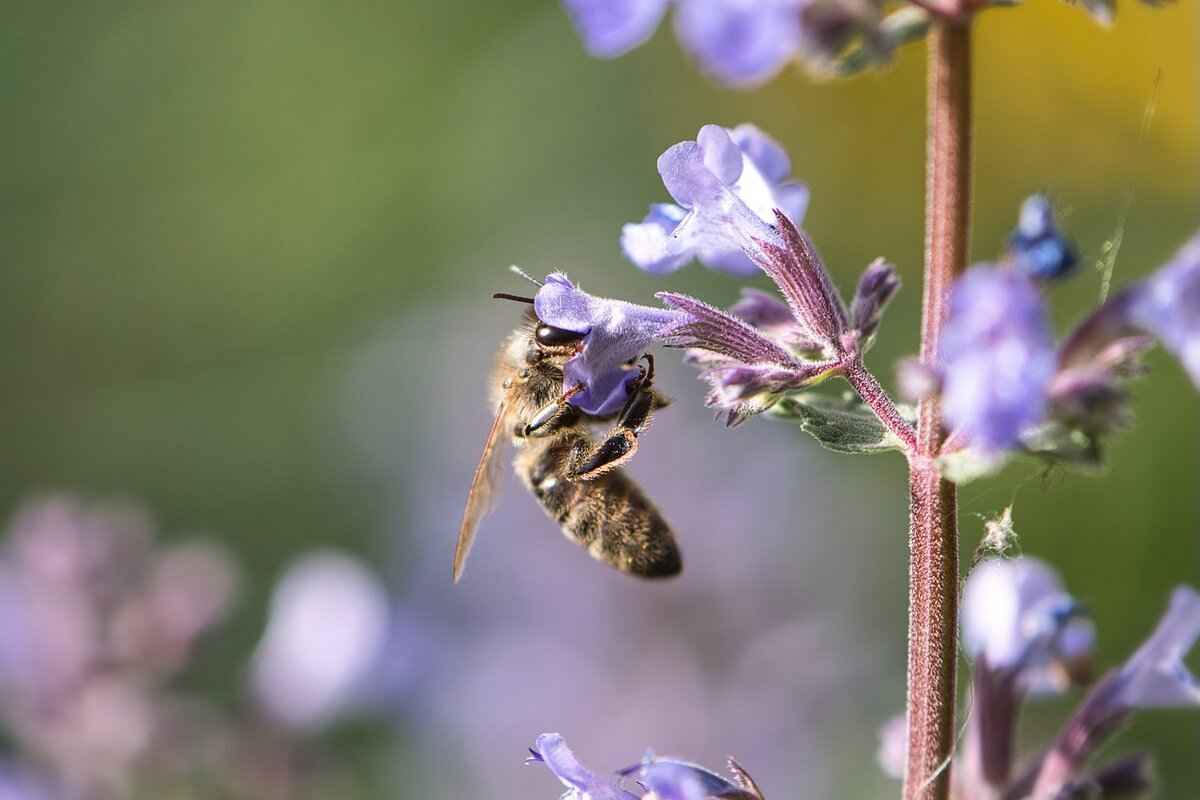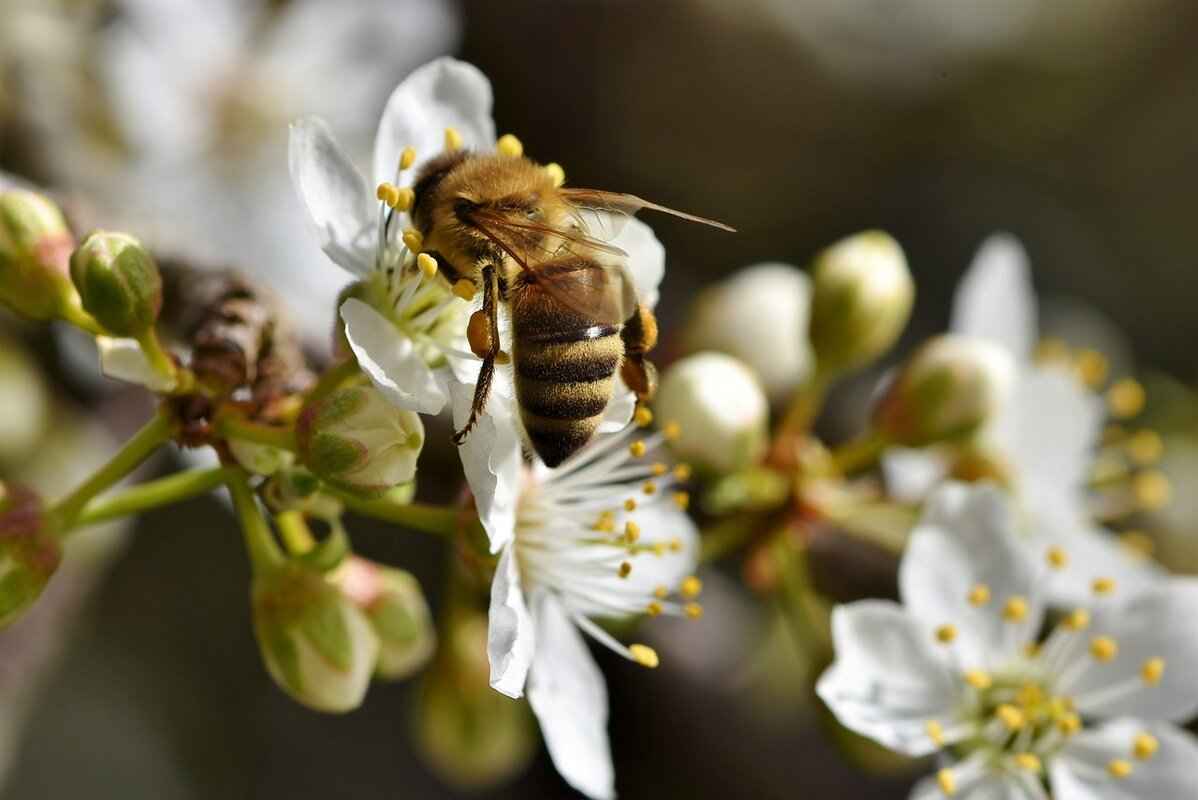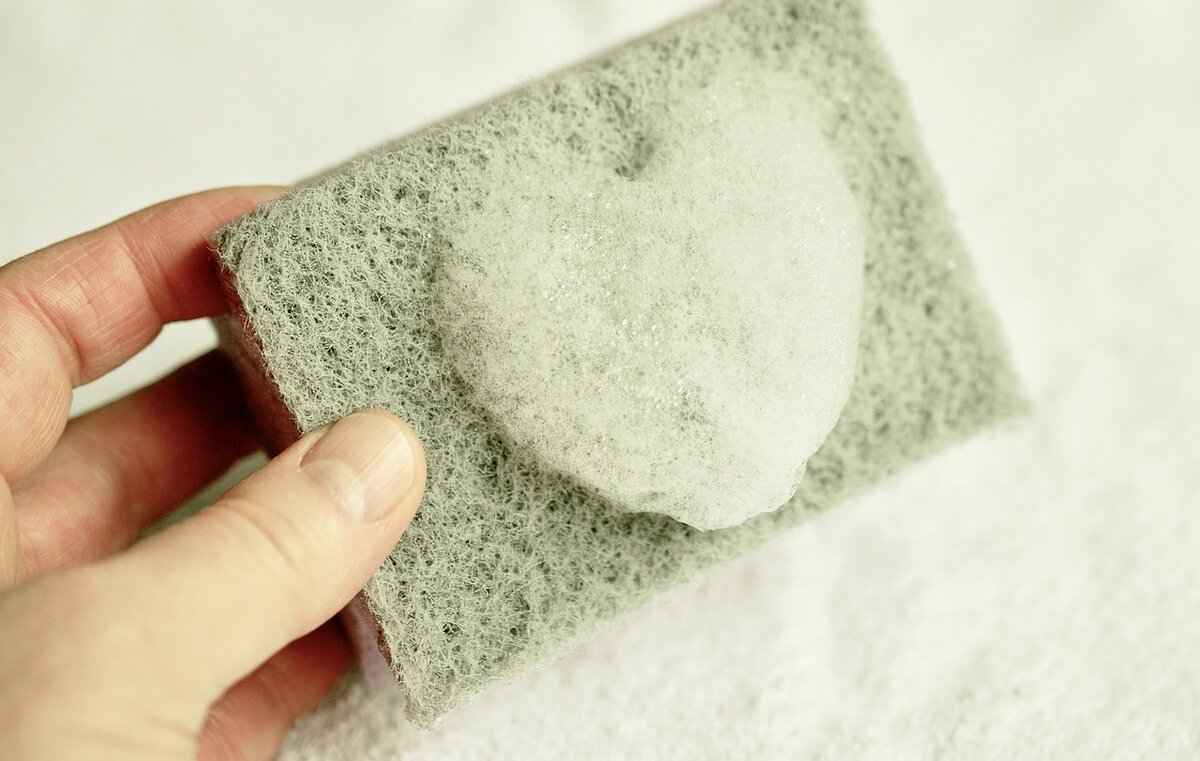This article provides a comprehensive guide on cleaning a nectar collector, ensuring optimal performance and longevity. Learn effective techniques, tools needed, and tips for maintaining your device.
Regular cleaning of your nectar collector is crucial for maintaining its functionality and flavor quality. Over time, residue from the materials you consume can accumulate, leading to a less enjoyable experience. Not only does this buildup affect the taste, but it can also hinder airflow and efficiency. By understanding the importance of cleanliness, you can enhance your overall experience and prolong the life of your device.
Gathering the right tools can make the cleaning process efficient and effective. Here are the essential items needed for a thorough cleaning:
- Isopropyl Alcohol: A powerful solvent for breaking down resin.
- Soft Brushes: Ideal for scrubbing away stubborn residue without scratching.
- Pipe Cleaners: Perfect for reaching narrow spaces.
- Containers: For soaking components in cleaning solutions.
Selecting a suitable cleaning solution is key. You can explore various options, including:
- Isopropyl Alcohol: Highly effective in dissolving resin and grime. Use a concentration of at least 70% for optimal results.
- Specialized Cleaning Products: Many brands offer solutions specifically designed for nectar collectors, which can be more effective than general cleaners.
Follow this detailed step-by-step guide to ensure your nectar collector is cleaned properly and efficiently:
Before cleaning, it is essential to disassemble your nectar collector correctly. Start by gently unscrewing or pulling apart the components, ensuring you don’t apply excessive force that could damage them.
Soaking the components in a cleaning solution can help break down stubborn residues. Submerge the parts in isopropyl alcohol or your chosen cleaning solution for about 30 minutes. This will help dissolve any buildup, making scrubbing easier.
Proper drying and reassembly are critical to ensure your nectar collector functions well after cleaning:
After cleaning, ensure all parts are thoroughly dried to prevent moisture accumulation. You can use a clean towel or let them air dry completely. Avoid using heat sources as they can damage the materials.
When reassembling your nectar collector, ensure each part fits securely. Check for any signs of wear or damage before putting it back together. A loose connection can lead to leaks or inefficient performance.
Regular maintenance can prolong the life of your nectar collector. Here are some practical maintenance tips:
Implementing a routine cleaning schedule can help maintain performance. Depending on usage, aim to clean your nectar collector after every few uses or at least once a week for frequent users. This will prevent buildup and ensure a pleasant experience each time.
Proper storage is essential for preventing damage. Store your nectar collector in a cool, dry place, away from direct sunlight. Consider using a protective case to avoid accidental damage when not in use.

Why Cleaning Your Nectar Collector is Essential
Keeping your nectar collector clean is not just a matter of aesthetics; it is fundamental to ensuring the device operates effectively and delivers the best possible flavor. Over time, residue from previous uses can build up, affecting both the taste and the overall experience. Here’s why regular cleaning should be a priority for every nectar collector user.
- Enhances Flavor Quality: One of the most significant reasons to clean your nectar collector is to maintain the purity of the flavors. Residual substances can impart unpleasant tastes, which can ruin your experience. Regular cleaning helps ensure that each use delivers the full, unadulterated flavor of your chosen concentrate.
- Improves Functionality: A clean nectar collector functions more efficiently. When the components are free from buildup, airflow is unobstructed, allowing for smoother draws. This can significantly enhance your overall experience, making it more enjoyable.
- Prevents Health Risks: Neglecting to clean your nectar collector can lead to the growth of bacteria and mold, which can pose health risks. Regular maintenance reduces these risks, ensuring that your device is safe to use.
- Increases Longevity: Regular cleaning can extend the life of your nectar collector. Buildup can lead to wear and tear on the components, potentially causing damage that could require costly repairs or replacements. By maintaining cleanliness, you can protect your investment.
- Saves Money: Cleaning your nectar collector regularly can save you money in the long run. A well-maintained device requires fewer replacements and repairs, allowing you to enjoy your concentrates without the added financial burden.
Understanding the importance of cleanliness goes beyond just the immediate benefits. It contributes to a more enjoyable and satisfying experience each time you use your nectar collector. By committing to a routine cleaning schedule, you can ensure that your device remains in optimal condition, ready to deliver the best flavors and performance.
In summary, the health of your nectar collector directly impacts your experience. Regular cleaning is essential for enhancing flavor, improving functionality, preventing health risks, and extending the lifespan of your device. Prioritizing cleanliness will undoubtedly lead to a more enjoyable and fulfilling experience.

Tools Required for Cleaning a Nectar Collector
When it comes to maintaining your nectar collector, having the right tools is essential for ensuring a thorough and efficient cleaning process. This section will delve into the essential items you need to gather, which will not only streamline your cleaning routine but also enhance the performance and longevity of your device.
To effectively clean your nectar collector, consider the following tools:
- Isopropyl Alcohol: A powerful solvent that dissolves resin and grime effectively.
- Cleaning Brushes: Various sizes of brushes can reach into the intricate parts of your nectar collector.
- Pipe Cleaners: Flexible and ideal for cleaning narrow passages.
- Soaking Container: A safe container to soak components in cleaning solutions.
- Microfiber Cloths: Soft cloths that prevent scratches while drying.
- Rubber Gloves: Protect your hands from harsh chemicals and residues.
Each tool serves a specific purpose in the cleaning process:
- Isopropyl Alcohol: Available in various concentrations, it is highly effective in breaking down sticky residues. Use at least 70% concentration for optimal results.
- Cleaning Brushes: These come in different shapes and sizes, allowing you to reach every nook and cranny of your nectar collector. A soft-bristle brush is ideal for delicate parts.
- Pipe Cleaners: Their flexibility makes them perfect for cleaning tight spots that brushes may not reach. They are especially useful for cleaning the mouthpiece and other narrow areas.
- Soaking Container: A dedicated container ensures that your components are submerged in cleaning solution without spilling. Choose one that is large enough to accommodate all parts.
- Microfiber Cloths: These are excellent for drying and polishing your nectar collector without leaving lint or scratches.
- Rubber Gloves: Protecting your skin is crucial when handling cleaning solutions, especially those that may contain harsh chemicals.
In addition to the tools mentioned, consider the following tips:
- Ventilation: Always clean in a well-ventilated area to avoid inhaling fumes from cleaning solutions.
- Routine Maintenance: Regularly cleaning your nectar collector will minimize the buildup of residues, making each cleaning session easier.
- Storage Solutions: Keep your cleaning tools organized and stored in a dry place to ensure they are ready for use when needed.
By gathering these essential tools, you will be well-prepared to tackle the cleaning of your nectar collector efficiently. Not only will this improve the performance of your device, but it will also enhance your overall experience. Remember, a clean nectar collector leads to a better flavor and more enjoyable sessions.
Choosing the Right Cleaning Solution
Selecting the appropriate cleaning solution for your nectar collector is a pivotal step in maintaining its performance and longevity. With various options available, it’s essential to explore each one to determine which is best suited for your specific needs.- Isopropyl Alcohol: This is one of the most commonly used cleaning agents for nectar collectors. Its effectiveness lies in its ability to dissolve resin and grime, making it easier to clean stubborn residues. Typically available in concentrations ranging from 70% to 99%, the higher concentrations are more effective but may also evaporate quickly, requiring you to work faster. When using isopropyl alcohol, ensure you soak the components for a sufficient amount of time, usually around 30 minutes, to allow the solution to break down the buildup.
- Specialized Cleaning Products: There are numerous cleaning products specifically designed for nectar collectors. These products often contain ingredients tailored to dissolve resin without damaging the materials of your device. Brands like Resin Remover and 420 Cleaner have gained popularity for their efficacy. When selecting a specialized cleaner, look for those that are non-toxic and environmentally friendly, ensuring that your cleaning process is safe for both you and the planet.
- Homemade Solutions: If you prefer a more natural approach, consider creating a homemade cleaning solution. A mixture of vinegar and baking soda can effectively tackle grime and odors. Combine equal parts of vinegar and water, then add a tablespoon of baking soda. This solution is not only gentle on your nectar collector but also eco-friendly.
When choosing a cleaning solution, it’s crucial to consider the material of your nectar collector. For instance, glass components can handle harsher chemicals, while silicone or plastic parts may require gentler solutions to avoid damage. Always read the manufacturer’s recommendations before proceeding with any cleaning method.
Additionally, ensure that you have the necessary tools on hand to facilitate the cleaning process. Brushes, cotton swabs, and microfiber cloths can help reach those hard-to-clean areas, ensuring a thorough clean. A combination of the right cleaning solution and appropriate tools will significantly enhance your cleaning efficiency.
In summary, selecting the right cleaning solution involves weighing the pros and cons of each option. Whether you opt for isopropyl alcohol, specialized products, or a homemade solution, the key is to ensure that it effectively removes residues without compromising the integrity of your nectar collector. Regular cleaning not only enhances the flavor of your sessions but also extends the life of your device, making it a worthwhile investment.
Isopropyl Alcohol
Isopropyl alcohol, often referred to as IPA, is a widely used solvent known for its **effectiveness** in cleaning various surfaces, including nectar collectors. This powerful substance is particularly effective in dissolving **resin** and grime, making it an ideal choice for maintaining the cleanliness of your device. Understanding the different concentrations of isopropyl alcohol and how to use it properly can significantly enhance your cleaning process.
- Concentrations of Isopropyl Alcohol
- 70% Isopropyl Alcohol: This concentration is commonly used for general cleaning purposes. It is effective in killing bacteria and dissolving dirt and grime. However, it may take longer to evaporate compared to higher concentrations.
- 91% Isopropyl Alcohol: This higher concentration is more effective for cleaning sticky residues and is ideal for quick evaporation. It is particularly useful for cleaning nectar collectors, as it can break down resin efficiently.
- 99% Isopropyl Alcohol: The highest concentration available, 99% IPA is best for heavy-duty cleaning tasks. It evaporates quickly and leaves minimal residue, making it perfect for ensuring your nectar collector is pristine.
How to Use Isopropyl Alcohol for Cleaning
Using isopropyl alcohol effectively requires a few simple steps:
- Preparation: Gather your cleaning supplies, including isopropyl alcohol, a container for soaking, and brushes for scrubbing.
- Disassemble the Nectar Collector: Carefully take apart your nectar collector to access all components that need cleaning.
- Soak the Components: Place the disassembled parts in a container filled with isopropyl alcohol. Allow them to soak for at least 30 minutes to break down the resin.
- Scrub the Surfaces: After soaking, use a brush to scrub any remaining residue. Pay special attention to areas where grime tends to accumulate.
- Rinse Thoroughly: After scrubbing, rinse the components with warm water to remove any remaining alcohol and residue.
- Dry Completely: Ensure all parts are thoroughly dried before reassembling to prevent moisture buildup.
Safety Precautions When Using Isopropyl Alcohol
While isopropyl alcohol is effective, it is essential to handle it with care. Here are some safety tips:
- Ventilation: Always work in a well-ventilated area to avoid inhaling fumes.
- Protective Gear: Consider wearing gloves and goggles to protect your skin and eyes from irritation.
- Flammability: Isopropyl alcohol is flammable, so keep it away from open flames and heat sources.
In conclusion, isopropyl alcohol is a powerful ally in keeping your nectar collector clean and functioning optimally. By understanding its concentrations and proper usage, you can ensure a thorough cleaning process that enhances your overall experience.
Specialized Cleaning Products
are essential for maintaining the performance and longevity of nectar collectors. These products are specifically formulated to tackle the unique challenges posed by resin and other residues that accumulate during use. In this section, we will explore some of the most effective cleaning solutions available on the market, their benefits, and how to use them effectively.
When choosing a specialized cleaning product, it is important to consider the ingredients and their effectiveness against stubborn residues. Many products are designed to be safe for various materials, ensuring that your nectar collector remains undamaged while being thoroughly cleaned. Here are some popular options:
- Resin Remover Solutions: These products are specifically designed to dissolve sticky resin and grime. They often contain natural ingredients that break down residues without harsh chemicals.
- Alcohol-Based Cleaners: While isopropyl alcohol is a common choice, there are specialized alcohol-based cleaners that are formulated for optimal performance. These cleaners often come in various concentrations, allowing users to choose the strength that suits their needs.
- Eco-Friendly Cleaners: For those who prefer environmentally safe options, eco-friendly cleaning products are available. These cleaners utilize biodegradable ingredients to effectively clean without harming the environment.
- Foaming Cleaners: Foaming cleaners can be particularly effective as they cling to surfaces, allowing for prolonged contact time with residues. This can enhance the cleaning process and ensure a thorough clean.
When using specialized cleaning products, it is crucial to follow the manufacturer’s instructions for optimal results. Start by disassembling your nectar collector and applying the cleaner to each component. Allow the cleaner to sit for the recommended time to break down the residues effectively. After soaking, use a soft brush or cloth to gently scrub any remaining grime. Rinse thoroughly with warm water to ensure all cleaning agents are removed, as any residue left behind can affect the taste and quality of your next experience.
In addition to cleaning solutions, consider investing in a cleaning kit that includes brushes designed for nectar collectors. These brushes can reach tight spots and thoroughly clean areas that are often overlooked. A combination of specialized cleaning products and the right tools will ensure that your nectar collector remains in top condition.
In summary, utilizing specialized cleaning products tailored for nectar collectors is vital for maintaining optimal performance. By selecting the right products and following proper cleaning techniques, you can enhance the longevity and functionality of your device, ensuring a satisfying experience every time.
Using Brushes and Other Tools
When it comes to maintaining the cleanliness of your nectar collector, utilizing the right brushes and tools can significantly enhance the cleaning process. These tools not only help in removing stubborn residues but also ensure that every part of your device is thoroughly cleaned, promoting optimal performance and longevity.
Choosing the right type of brush is essential for effectively cleaning your nectar collector. Here are some of the most effective brushes:
- Pipe Cleaners: These flexible brushes are perfect for reaching intricate areas within your nectar collector. Their thin design allows them to navigate tight spots, ensuring no residue is left behind.
- Soft-Bristle Brushes: Ideal for gently scrubbing surfaces without scratching, soft-bristle brushes can effectively remove grime while protecting the integrity of your collector.
- Detail Brushes: These brushes come in various sizes and shapes, making them suitable for cleaning small, hard-to-reach parts of your nectar collector. They are particularly useful for intricate designs.
In addition to brushes, several other tools can aid in the cleaning process:
- Cleaning Cloths: Microfiber cloths are excellent for wiping down surfaces and removing any remaining moisture after cleaning. They are soft and non-abrasive, ensuring that your collector stays scratch-free.
- Cleaning Solution Sprays: Specialized cleaning solutions can help dissolve stubborn residues. Applying these solutions before using brushes can make the cleaning process more effective.
- Rubber Gloves: Wearing gloves can protect your hands from harsh cleaning solutions and residues, ensuring a safe cleaning experience.
To maximize the effectiveness of your cleaning tools, consider the following tips:
- Pre-soak Components: Before using brushes, soak your nectar collector components in a suitable cleaning solution. This will help break down any stuck-on residues.
- Use Gentle Pressure: When scrubbing, apply gentle pressure to avoid damaging the surfaces of your collector. Let the cleaning solution do most of the work.
- Rinse Thoroughly: After cleaning, ensure that all cleaning solutions and residues are thoroughly rinsed away. This prevents any lingering chemicals from affecting the flavor of your nectar.
In conclusion, using the right brushes and cleaning tools is vital for maintaining your nectar collector. By selecting appropriate brushes and employing effective cleaning techniques, you can ensure that your device remains in optimal condition, providing you with the best possible experience.

Step-by-Step Guide to Cleaning Your Nectar Collector
Cleaning your nectar collector is essential for maintaining its performance and ensuring a great experience. This step-by-step guide will walk you through the entire cleaning process, making it simple and efficient.
Follow these detailed steps to ensure your nectar collector is cleaned properly and efficiently, maximizing its performance:
- Disassemble Your Nectar Collector: Start by carefully disassembling your nectar collector. Make sure to remove all detachable parts, including the mouthpiece, body, and any additional attachments. This will allow you to access all areas that require cleaning.
- Gather Your Cleaning Supplies: Before you begin, gather the necessary cleaning supplies. You will need:
- Isopropyl alcohol (at least 90% concentration)
- Coarse salt (optional, for scrubbing)
- A soft brush or pipe cleaner
- A container for soaking
- Warm water
- Soaking the Components: Place the disassembled parts in a container. Pour enough isopropyl alcohol to fully submerge them. If there are stubborn residues, add a tablespoon of coarse salt to the alcohol. Allow the components to soak for about 30 minutes. This will help dissolve any resin and grime.
- Scrubbing the Parts: After soaking, use a soft brush or pipe cleaner to scrub the insides of each part. Pay special attention to areas that are hard to reach. The combination of soaking and scrubbing will ensure a thorough clean.
- Rinse Thoroughly: Once you have scrubbed all the components, rinse them under warm water to remove any remaining cleaning solution. Make sure no alcohol residue is left behind, as this can affect the taste during use.
- Drying the Components: After rinsing, it’s crucial to dry all parts completely. You can use a clean towel or let them air dry on a drying rack. Ensure there is no moisture left, as this can lead to mold or mildew growth.
- Reassemble Your Nectar Collector: Once everything is dry, carefully reassemble your nectar collector. Make sure all parts fit securely. Double-check that there are no leftover pieces and that everything is in its correct place.
By following this step-by-step guide, you will maintain your nectar collector in optimal condition, ensuring it delivers the best performance. Regular cleaning not only enhances flavor quality but also extends the lifespan of your device.
Disassembling Your Nectar Collector
Before embarking on the cleaning journey of your nectar collector, it is crucial to disassemble it correctly. This process not only ensures that you can clean each component thoroughly but also helps to prevent any damage during the cleaning process. Here are some essential steps and best practices to follow when disassembling your nectar collector.
- Gather Your Tools: Before starting, make sure you have all the necessary tools at hand. You will need:
- A soft cloth or microfiber towel
- A pair of gloves (to protect your hands)
- A small container for holding the parts
- A cleaning brush for intricate parts
1. Identify the Components: Familiarize yourself with the different parts of your nectar collector. Typically, a nectar collector consists of:
- The mouthpiece
- The body or main chamber
- The tip or nail
2. Remove the Mouthpiece: Start by gently twisting or pulling the mouthpiece away from the main body. Be cautious not to apply excessive force, as this can lead to breakage.
3. Detach the Body: Next, carefully remove the body of the nectar collector from the tip. Depending on the design, this may require a gentle twist or pull. Ensure that you are doing this slowly to avoid damaging any seals or joints.
4. Take Off the Tip: The tip is often the most delicate part of the nectar collector. Gently unscrew or pull it off, depending on its attachment method. Handle it with care to prevent any chips or cracks.
5. Inspect for Residue: Once disassembled, take a moment to inspect each component for any residual buildup. This will help you determine how much cleaning is necessary and which areas require more attention.
6. Organize the Parts: Place each component in a designated area or container to keep them organized. This will make the cleaning and reassembly process much smoother and prevent any parts from getting lost.
By following these steps, you can ensure that your nectar collector is disassembled safely and efficiently. This careful approach not only protects your device but also sets the stage for a thorough cleaning, ultimately enhancing your overall experience. Remember, taking the time to disassemble your nectar collector properly will pay off in the long run, as it allows for optimal maintenance and performance.
Soaking the Components
Cleaning a nectar collector is essential for maintaining its performance and ensuring a pleasant experience. One of the most effective methods for cleaning involves soaking the components in a suitable cleaning solution. This process not only helps to eliminate stubborn residues but also prepares the device for further cleaning techniques.
Soaking the components of your nectar collector is a crucial step in the cleaning process. By immersing the parts in a cleaning solution, you can effectively break down and dissolve sticky residues that accumulate over time. This method is particularly useful for removing resin and other buildup that might hinder the device’s performance.
To achieve optimal results, it is important to consider the following factors:
- Cleaning Solution: Choose a cleaning solution that is effective yet safe for your nectar collector’s materials. Isopropyl alcohol is a popular choice due to its ability to dissolve resin. Alternatively, you may opt for specialized cleaning products that are designed specifically for this purpose.
- Soaking Time: The duration for which you soak the components can greatly affect the cleaning outcome. Typically, a soaking time of 30 minutes to 1 hour is recommended. However, for particularly stubborn residues, extending the soak time to several hours may be beneficial.
- Temperature: Using warm water in your cleaning solution can enhance its effectiveness. Heat helps to loosen grime and resin, making it easier to clean. However, ensure that the temperature is not too high to avoid damaging any sensitive components.
- Agitation: Occasionally agitating the solution during soaking can help to further dislodge residues. Gently shaking the container can make a significant difference in the cleaning process.
Once the soaking period is complete, carefully remove the components from the solution. It is advisable to rinse each part thoroughly under warm running water to eliminate any remaining cleaning solution. This step is crucial as residual cleaning agents can affect the flavor and quality of your next use.
After rinsing, inspect each component for any remaining residue. If necessary, you can repeat the soaking process for parts that still show signs of buildup. For best results, always ensure that your nectar collector is completely dry before reassembling it.
By following these soaking techniques, you can significantly improve the cleanliness and functionality of your nectar collector. Regular soaking, combined with other cleaning methods, will help maintain the quality of your device, ensuring that it performs optimally and delivers the best possible experience.

Drying and Reassembling Your Nectar Collector
After cleaning your nectar collector, the next critical steps are drying and reassembling the device. Proper drying is essential to prevent moisture accumulation, which can lead to mold growth and impair the flavor of your concentrates. Reassembly requires careful attention to detail to ensure that all components fit together correctly, allowing your device to function optimally.
To effectively dry your nectar collector, consider the following methods:
- Air Drying: This is the simplest method. After rinsing your components, place them on a clean, dry towel or a drying rack. Ensure they are positioned in a way that allows air to circulate freely around them. This method can take several hours, depending on the humidity levels in your environment.
- Using a Hairdryer: For a quicker solution, you can use a hairdryer on a low setting. Hold it at least 6 inches away from the components to avoid overheating. Move the dryer around to ensure even drying.
- Silica Gel Packs: These packs can absorb moisture effectively. Place your components in a container with silica gel packs for a few hours to draw out any remaining moisture.
Regardless of the method you choose, make sure all parts are completely dry before proceeding to reassemble your nectar collector.
Once your nectar collector is thoroughly dried, it’s time to reassemble it. Follow these tips to ensure a smooth reassembly:
- Check for Residue: Before reassembling, inspect each component for any remaining residue. If you find any, consider cleaning that part again to maintain the quality of your device.
- Follow the Original Assembly Order: It can be helpful to refer to any documentation or videos on how your nectar collector was originally assembled. Following the same order can prevent confusion and ensure that each part fits correctly.
- Use Gentle Pressure: When fitting pieces together, apply gentle pressure. Forcing parts can lead to cracks or breakage, particularly in glass components.
- Secure All Connections: Ensure that all connections are tight but not overly forced. Loose connections can lead to air leaks, affecting the performance of your nectar collector.
After reassembly, give your nectar collector a final inspection. Check for any misalignments or loose parts. Once satisfied, your device is ready for use!
By following these drying and reassembly techniques, you can ensure your nectar collector remains in peak condition, providing you with optimal performance and enhancing your overall experience.
Drying Techniques
When it comes to maintaining your nectar collector, proper drying techniques are essential to prevent moisture accumulation and ensure your device is ready for use. Moisture can lead to unwanted buildup, affecting the flavor and functionality of your collector. Here, we will explore various methods to effectively dry your nectar collector components after cleaning.
After cleaning, it is crucial to dry your nectar collector thoroughly. Any residual moisture can create an environment for mold and bacteria to grow, which can compromise the taste of your extracts and the overall performance of your device. Understanding the significance of proper drying techniques will help you maintain your collector in optimal condition.
One of the simplest methods to dry your nectar collector is to use air drying. After cleaning, disassemble your device and place the individual components on a clean, dry towel or drying rack. Ensure they are positioned in a way that allows air to circulate freely around them. This method is effective but can take some time, depending on humidity levels.
If you need your nectar collector ready for use sooner, consider using a fan to expedite the drying process. Position a fan to blow air over the disassembled parts. The increased airflow will help evaporate moisture more quickly, making it a practical solution for those in a hurry. Just be sure to avoid direct heat, as it can damage the components.
While using heat can be effective, it is important to exercise caution. Heat drying can be done using a low-temperature oven or a heat gun, but this method should be approached with care. Set the oven to a very low temperature (around 150°F or 65°C) and place the parts on a baking sheet. Monitor closely to prevent overheating, which can warp or damage the materials.
Another effective technique involves using absorbent materials such as microfiber cloths or paper towels. After rinsing your components, gently pat them dry with these materials to soak up excess moisture. This method can be particularly useful for intricate parts where air drying alone may not suffice.
For the best results, consider combining various drying techniques. For instance, you can start with absorbent materials to remove the majority of moisture, followed by air drying or using a fan to ensure complete dryness. This multi-faceted approach can significantly reduce the risk of any moisture-related issues.
Before reassembling your nectar collector, it is critical to ensure that all components are completely dry. Inspect each part carefully for any signs of moisture, particularly in crevices and joints. If in doubt, allow additional drying time to guarantee that your device is ready for its next use.
By employing these , you can maintain the integrity and functionality of your nectar collector, ensuring that it delivers the best possible experience every time you use it.
Reassembly Tips
Reassembling your nectar collector is a critical step that requires attention to detail and precision. Ensuring that all components fit securely is essential for optimal functionality and performance. Here are some valuable tips to guide you through the reassembly process:
- Organize Your Parts: Before you begin reassembling, lay out all the components in a clear and organized manner. This will help you keep track of each piece and ensure nothing is missing.
- Refer to Diagrams: If available, refer to any diagrams or guides that came with your nectar collector. Visual aids can be incredibly helpful in understanding how each part fits together.
- Check for Residues: Before reassembling, inspect each component for any remaining residue or moisture. Even small amounts of leftover cleaning solution can affect the performance of your nectar collector.
- Align Components Carefully: When putting the pieces back together, take your time to align them properly. Misalignment can lead to leaks or improper airflow, which can hinder your experience.
- Secure Connections: Ensure that all connections are snug and secure. If your nectar collector has any joints or seals, make sure they are tightly fitted to prevent any air or vapor leaks.
- Test Before Use: Once you have reassembled your nectar collector, conduct a quick test to ensure everything is functioning as it should. Check for any unusual sounds or leaks before using it for your next session.
Remember, reassembling your nectar collector is just as important as the cleaning process. A well-assembled device not only enhances your experience but also prolongs the life of your equipment. Taking the time to follow these tips will ensure that your nectar collector is ready for optimal performance, allowing you to enjoy your sessions without any hassle.
In summary, the reassembly process should not be rushed. By paying attention to detail and following these guidelines, you can ensure that your nectar collector functions smoothly and efficiently. Regular maintenance and careful reassembly will lead to a better overall experience, allowing you to fully enjoy the benefits of your device.

Maintaining Your Nectar Collector for Longevity
Regular maintenance of your nectar collector is essential not only for optimal performance but also for extending the lifespan of your device. With proper care, you can enjoy the full benefits of your nectar collector while ensuring it remains in excellent condition. This guide will provide you with practical maintenance tips that are easy to follow and highly effective.
- Routine Cleaning: Establishing a routine cleaning schedule is vital. Depending on how frequently you use your nectar collector, aim for a thorough clean every few uses. This prevents the buildup of resin and grime, which can affect flavor and performance. For heavy users, consider cleaning after every session.
- Proper Storage: How you store your nectar collector plays a significant role in its longevity. Always ensure that your device is stored in a cool, dry place, away from direct sunlight. Using a protective case or pouch can help prevent accidental damage and keep it clean.
- Inspecting for Damage: Regularly inspect your nectar collector for any signs of wear and tear. Look for cracks, chips, or any loose components. Early detection of damage can prevent further issues and costly repairs.
- Using Quality Materials: Invest in high-quality cleaning solutions and tools. Using harsh chemicals can degrade the materials of your nectar collector. Opt for isopropyl alcohol or specialized cleaning solutions that are safe for your device.
Additional Maintenance Tips
Aside from routine cleaning and proper storage, consider the following additional tips to enhance the longevity of your nectar collector:
1. Temperature Control: Avoid exposing your nectar collector to extreme temperatures. Rapid temperature changes can cause glass to crack or shatter.2. Gentle Handling: Always handle your nectar collector with care. Avoid dropping or knocking it against hard surfaces.3. Regular Use: Surprisingly, regular use can actually help maintain your nectar collector. When left unused for long periods, residue can harden and become more challenging to clean.
By incorporating these maintenance practices into your routine, you can significantly extend the life of your nectar collector. Remember, a well-maintained device not only performs better but also enhances your overall experience. Taking the time to care for your nectar collector will pay off in the long run, ensuring that you can enjoy it for many sessions to come.
Routine Cleaning Schedule
Establishing a for your nectar collector is essential for maintaining its performance and ensuring a clean and enjoyable experience. Regular cleaning not only preserves the flavor quality but also extends the lifespan of your device. This section discusses how often you should clean your nectar collector based on usage and provides practical tips to create an effective cleaning schedule.
The frequency of cleaning your nectar collector largely depends on how often you use it. For casual users who enjoy the nectar collector once or twice a week, a cleaning routine every two weeks may suffice. However, for daily users or those who frequently enjoy concentrates, a cleaning schedule of every few days is recommended. This helps prevent the buildup of resin and gunk that can affect flavor and performance.
- Cloudy Glass: If the glass components appear cloudy or discolored, it’s time for a thorough cleaning.
- Unpleasant Taste: If you notice a change in flavor or an unpleasant taste during use, this is a clear sign that your nectar collector needs attention.
- Visible Residue: Any visible residue or buildup on the device indicates that cleaning is necessary.
To establish a cleaning routine, consider the following tips:
- Weekly Cleaning: For frequent users, set aside time each week to clean your nectar collector. This can be a simple rinse with warm water followed by a soak in a cleaning solution.
- Bi-Weekly Deep Clean: Every two weeks, perform a more thorough cleaning. Disassemble the device, soak the components, and use brushes to remove stubborn residues.
- Monthly Maintenance: Once a month, give your nectar collector a detailed inspection. Check for any wear and tear, and replace any parts if necessary.
Maintaining a cleaning schedule can be challenging, but here are some practical tips:
- Set Reminders: Use your phone or calendar to set reminders for when it’s time to clean.
- Make it Part of Your Routine: Incorporate cleaning into your regular routine, such as cleaning after every few uses or on a specific day of the week.
- Keep Cleaning Supplies Handy: Store your cleaning supplies near your nectar collector to make the process quick and easy.
By implementing a routine cleaning schedule, you can ensure that your nectar collector remains in optimal condition, providing you with the best experience possible. Regular maintenance not only enhances flavor but also contributes to the longevity of your device, allowing you to enjoy your sessions without interruption.
Storing Your Nectar Collector Properly
Proper storage of your nectar collector is crucial for maintaining its integrity and ensuring optimal performance over time. When not in use, improper storage can lead to damage, contamination, and reduced functionality. This section outlines the best practices for storing your nectar collector effectively.
- Choose a Safe Location: Select a storage area that is dry, cool, and away from direct sunlight. Exposure to heat and light can degrade materials over time.
- Use Protective Cases: Investing in a protective case or pouch can prevent scratches and other physical damage. Look for cases specifically designed for nectar collectors, as they often have padded interiors.
- Disassemble Before Storing: If your nectar collector is designed to be disassembled, take it apart before storage. This helps to prevent any parts from getting stuck together and makes cleaning easier when you’re ready to use it again.
- Avoid Stacking: When storing multiple nectar collectors or related accessories, avoid stacking them on top of each other. This can lead to unnecessary pressure and potential breakage. Instead, keep them in separate compartments or containers.
Keep It Clean: Before storing, ensure your nectar collector is thoroughly cleaned and dried. Residue from previous uses can attract pests or lead to mold growth if left unattended. Use a suitable cleaning solution and follow the cleaning guidelines to maintain its condition.
Humidity Control: If you live in a humid environment, consider using silica gel packets or a dehumidifier in the storage area. Excess moisture can lead to mold and deterioration of materials.
Labeling: If you have multiple devices, label your storage containers to easily identify each one. This will save time and ensure that you are using the correct device when needed.
By following these best practices for storing your nectar collector, you can help ensure its longevity and performance. Proper storage not only protects your investment but also enhances your overall experience when using the device.
Frequently Asked Questions
- How often should I clean my nectar collector?
It’s recommended to clean your nectar collector after every use or at least once a week if you use it frequently. Keeping it clean ensures optimal performance and a better flavor experience.
- What tools do I need for cleaning?
You’ll need some basic tools like isopropyl alcohol or a specialized cleaning solution, soft brushes, and possibly pipe cleaners. These tools will help you reach all the nooks and crannies of your nectar collector.
- Can I use regular soap to clean my nectar collector?
While you can use soap, it’s not the best option. Soap can leave residues that affect the taste. Stick with isopropyl alcohol or products specifically designed for cleaning nectar collectors to avoid any flavor contamination.
- What’s the best way to dry my nectar collector after cleaning?
After cleaning, let the components air dry completely. You can also use a lint-free cloth to gently wipe down the surfaces. Just make sure there’s no moisture left before reassembling!
- How should I store my nectar collector?
Store your nectar collector in a cool, dry place, ideally in a protective case or pouch. This prevents dust accumulation and potential damage when it’s not in use.














